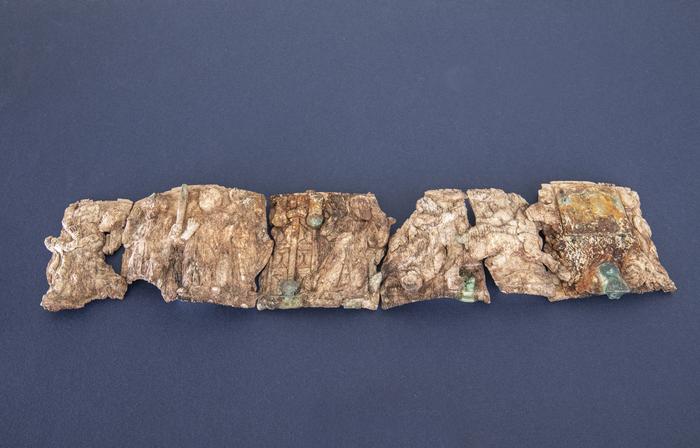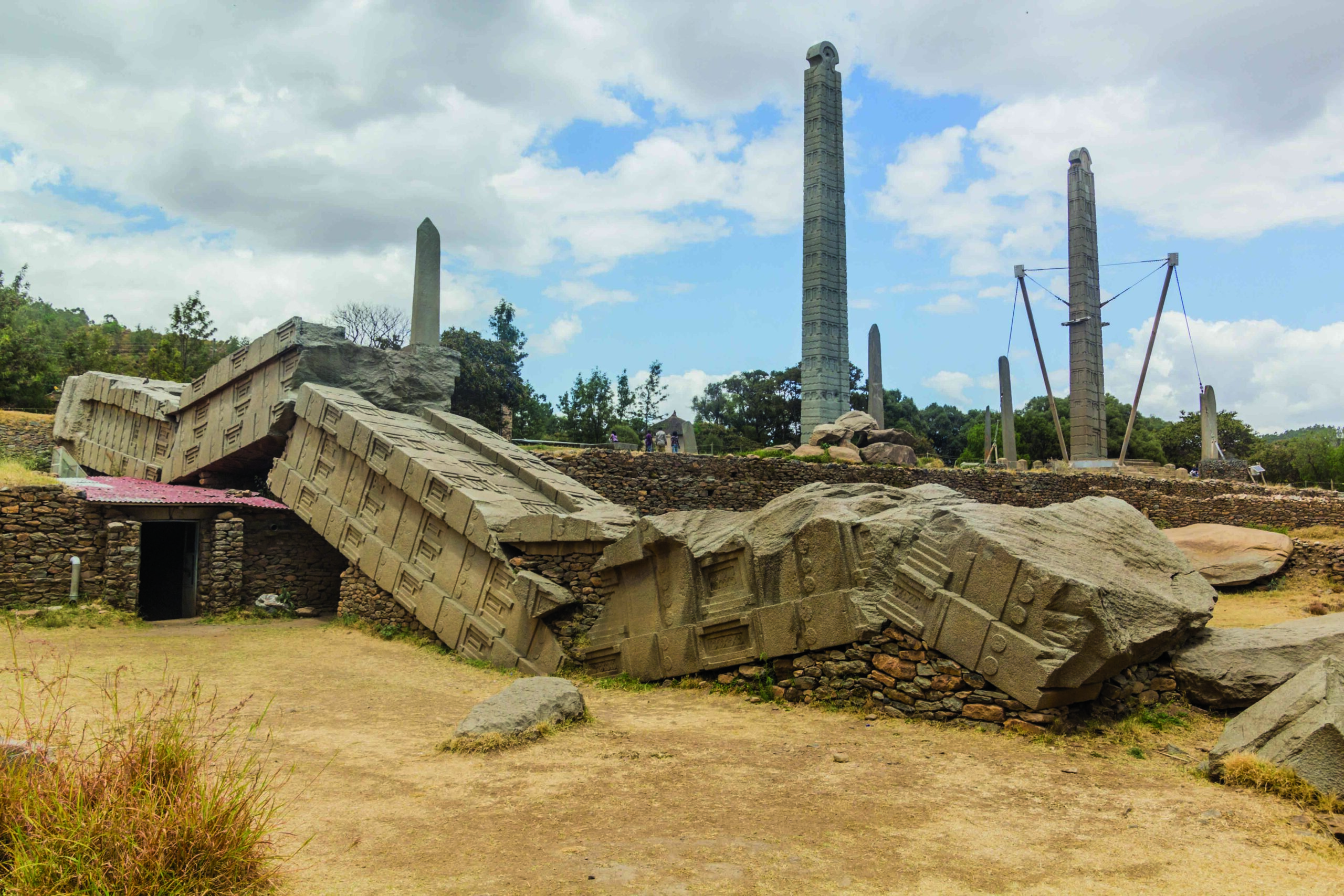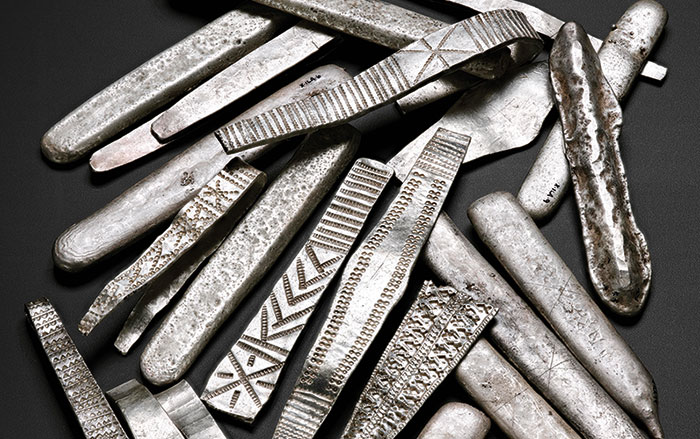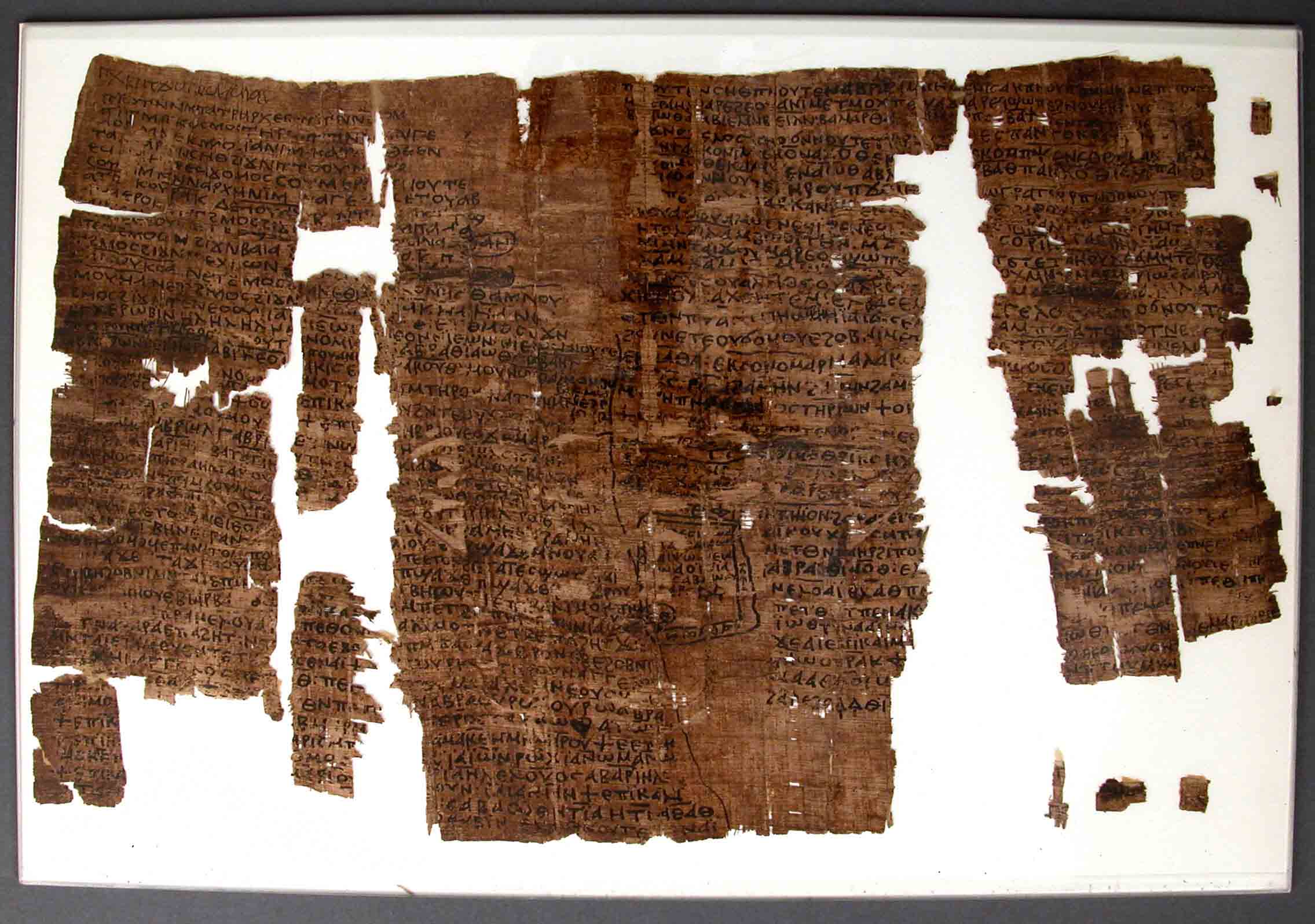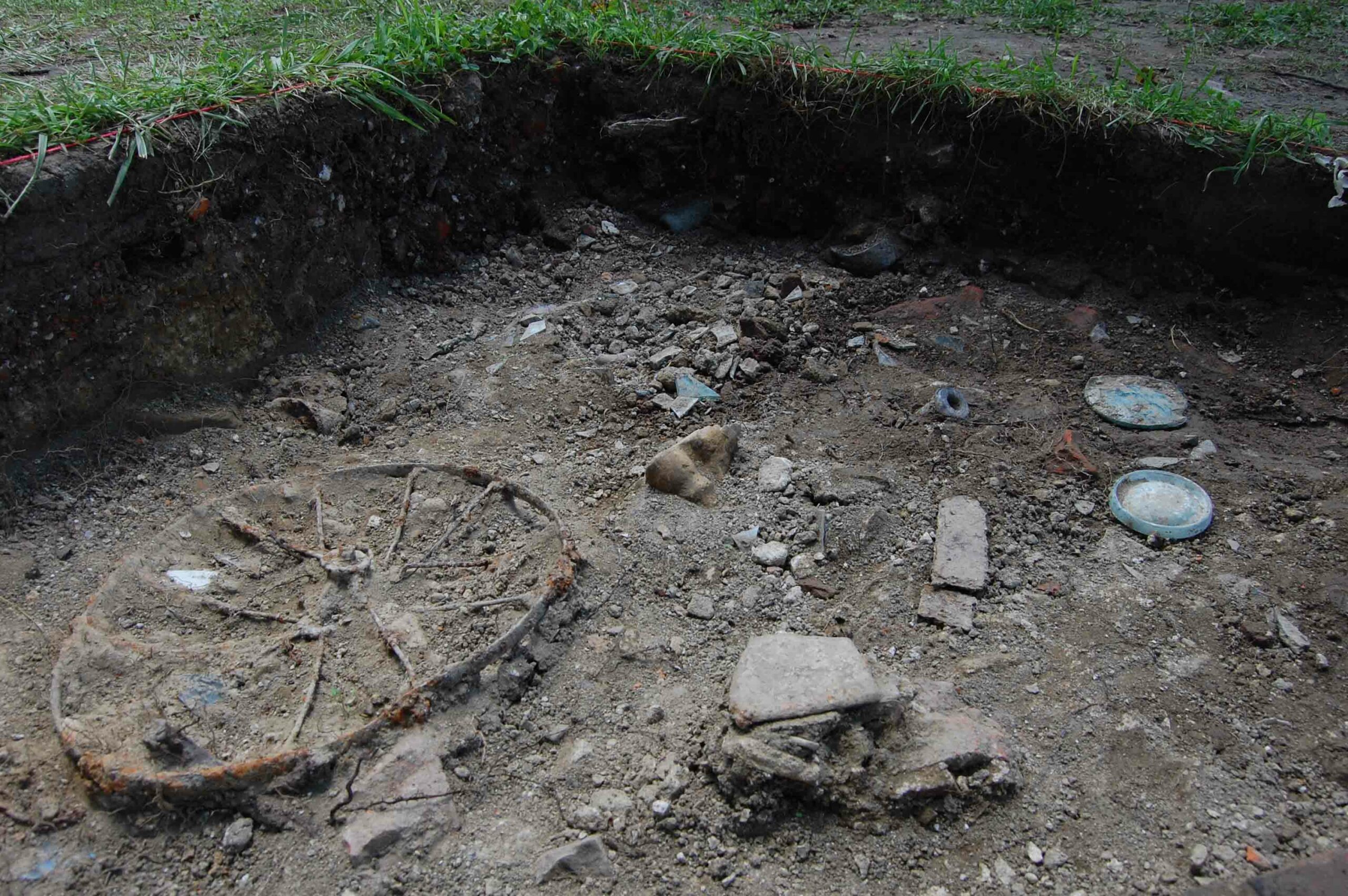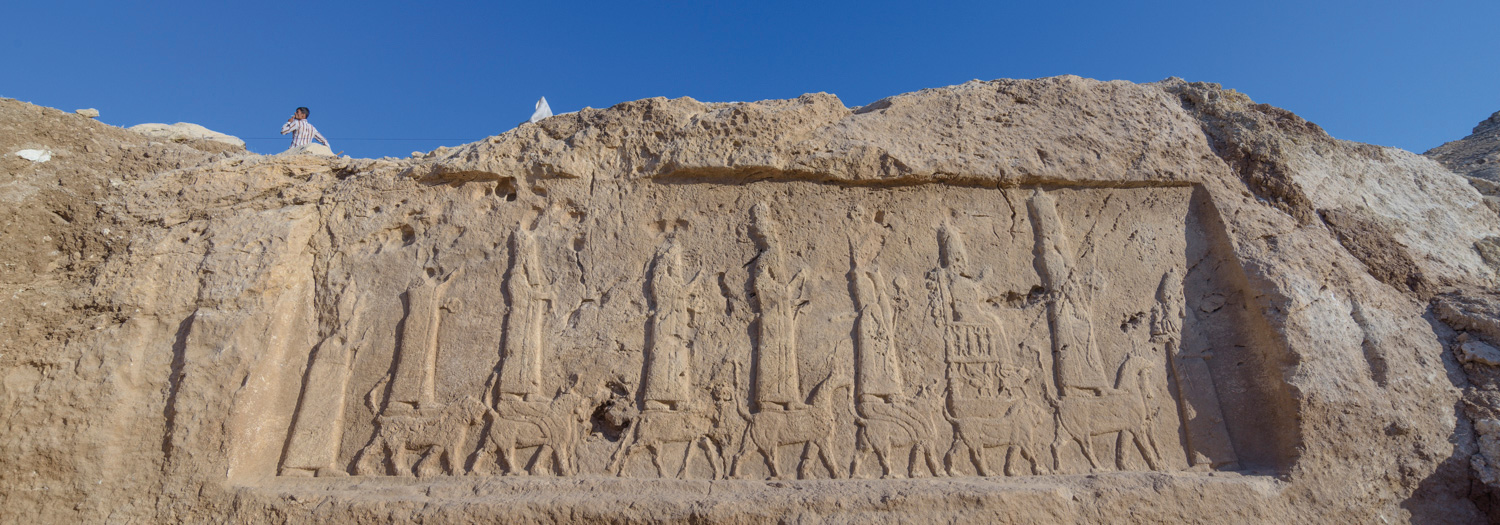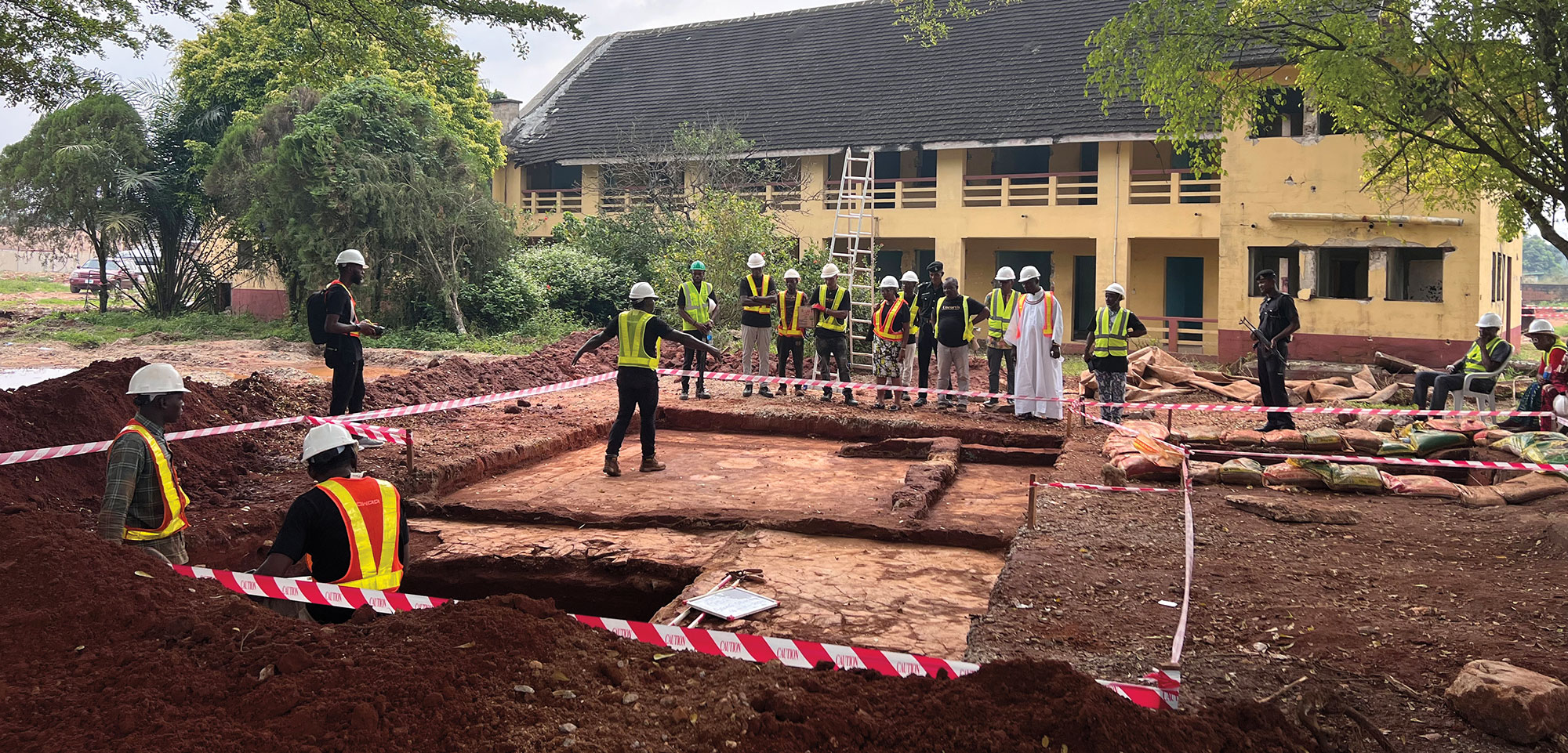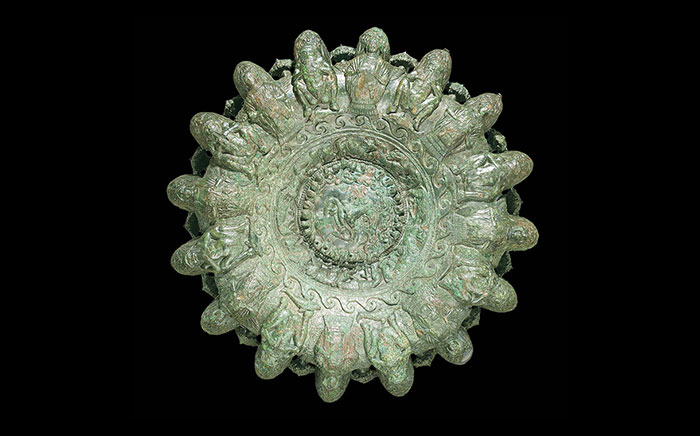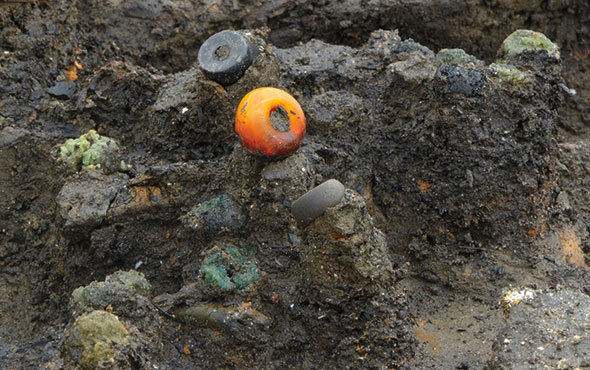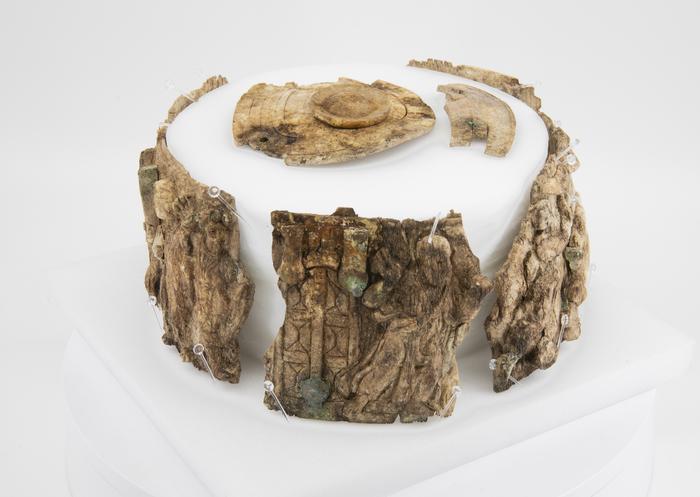
INNSBRUCK, AUSTRIA—According to a Newsweek report, fragments of a Christian pyx estimated to be 1,500 years old have been found in a fifth-century church at the site of a hilltop settlement in southern Austria. The round, ivory container, decorated with religious motifs, would have been used to store consecrated bread known as the Eucharist. The illustrations include a depiction of a man at the foot of a mountain turning his gaze away while a hand places something between his arms. “This is the typical depiction of the handing over of the laws to Moses on Mount Sinai, the beginning of the covenant between God and man from the Old Testament,” said Gerald Grabherr of the University of Innsbruck. He thinks that the pyx was broken when it was buried under an altar in a side chapel. “The pyx was presumably also seen as sacred and was treated as such because it was in contact with a relic,” Grabherr explained. To read about manuscripts recovered from a monastery at the foot of Mount Sinai, go to "Recovering Hidden Texts."


